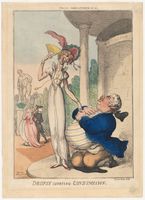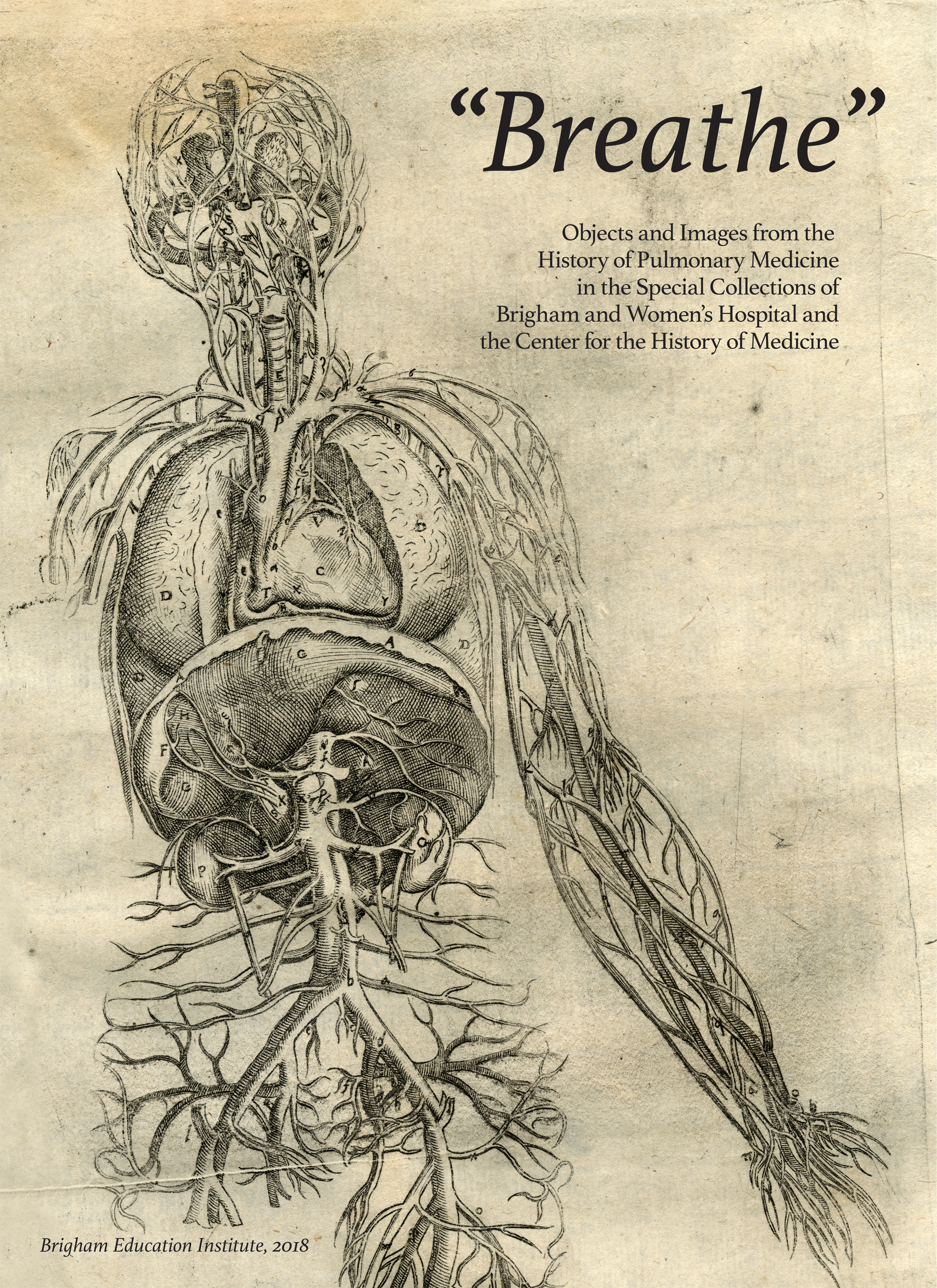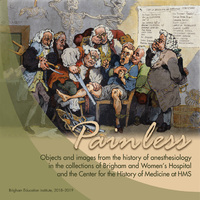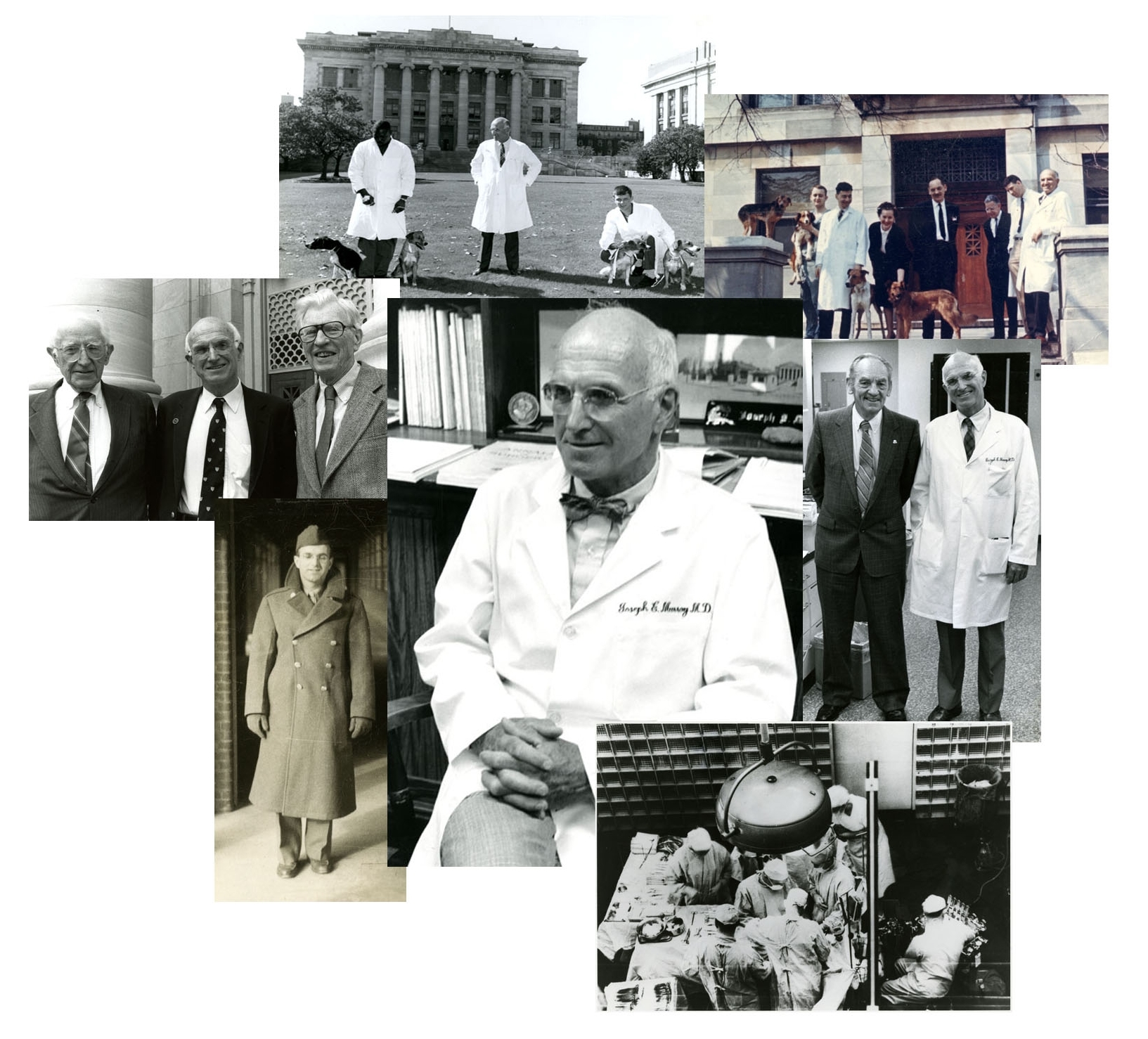Browse Exhibits (46 total)
"This Abominable Traffic" : Physicians on Slavery
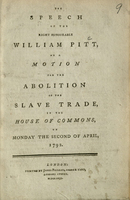
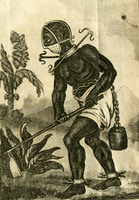 As Harvard University and other American educational institutions grapple with their historic ties to slavery and its legacy, this display, drawn from the rare book and manuscript collections of the Countway Library's Center for the History of Medicine highlights some of the medical aspects of slavery and racism. Physicians of the 18th and 19th centuries were some of the most well-travelled individuals of their day and had many opportunities to witness slavery in the West Indies and United States. Their travel narratives provide firsthand accounts of the experiences of slaves, their medical care, and treatment by owners and slaveholders.
As Harvard University and other American educational institutions grapple with their historic ties to slavery and its legacy, this display, drawn from the rare book and manuscript collections of the Countway Library's Center for the History of Medicine highlights some of the medical aspects of slavery and racism. Physicians of the 18th and 19th centuries were some of the most well-travelled individuals of their day and had many opportunities to witness slavery in the West Indies and United States. Their travel narratives provide firsthand accounts of the experiences of slaves, their medical care, and treatment by owners and slaveholders.
A Brief History of Women at Harvard Medical School
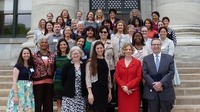
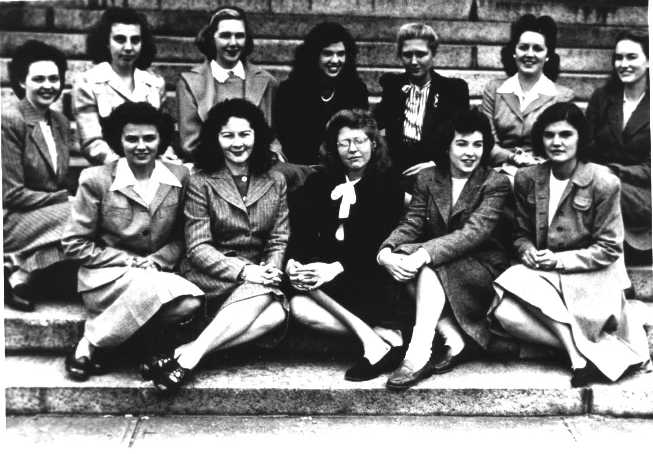
Harvard Medical School has both a long and a brief history regarding women students and faculty members.
This exhibit explores that complicated history, highlighting the first woman student applicant and Harvard Medical School’s first coeducational class; the first group of women researchers, instructors, leading to the first full professor; the Joint Committee on the Status of Women; and the creation of the Archives for Women in Medicine and the importance of highlighting the achievements of women leaders in medicine.
A Moment's Insight
An online exhibit partnering artifacts and osteological preparations from the Warren Anatomical Museum with the modern and historical photographic techniques of the student artists of the Art Institute of Boston. The exhibit was derived from a November 2011 photography workshop and a May/June 2012 physical display of the artifacts and photographs at the Warren Museum.
Battle-scarred: Caring for the Sick and Wounded of the Civil War
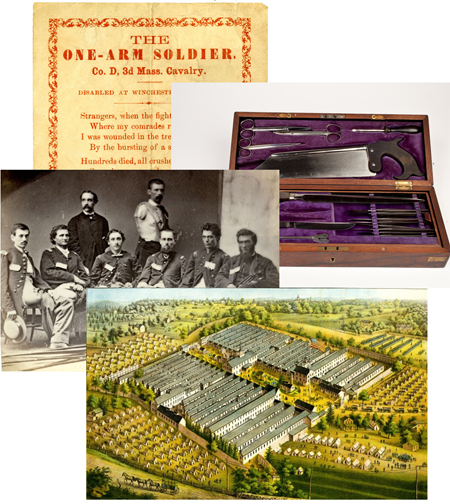
Why, after 150 years, do we continue to find the American Civil War so compelling? Certainly the nature of the conflict and the appalling number of casualties--some 620,000 killed in action or dead of wounds or disease--have engrossed the attention of historians, researchers, and the public since the war itself. The war was also fought on home soil, with many battlefields near American cities and towns. Even more gripping, perhaps, is the array of documentation that survives from the war. Hundreds of books and memoirs of wartime experiences and military life have been published over the years, but there are also rich collections of official government and military records, personal letters and diaries, photographs, newspapers and periodicals, clothing, artifacts, relics, weapons and armaments, memorabilia, artwork, poetry, and music, documenting every conceivable aspect of the Civil War, from men and women, Union and Confederate, soldiers and civilians, that offer local and personal dimensions to an epic national political and military struggle.
Battle-scarred examines the Civil War from a particular perspective, drawing on the rich library and museum resources of the Countway's Center for the History of Medicine, to commemorate those who died in battle and also document the experiences of the wounded and the ill and the men and women who cared for them on the battlefield, in hospitals and prison camps, and on the home front.
Beyond the Bone Box
Drawing on the rich connections between the holdings of the Warren Anatomical Museum (WAM) and the manuscripts, archival, and rare book collections housed in the Center for the History of Medicne (CHoM), Beyond the Bone Box is a pilot project to build circulating special collections resources with which students of multiple disciplines can physically engage with artifact and document surrogates anywhere on the Harvard campus.
Inspired by Harvard Medical School’s retired bone box program, which allowed medical students to borrow sets of human bones for home study, and developed in partnership with Harvard faculty, curators, archivists, and librarians, this project develops circulating resources that contain 3D-printed copies of WAM case studies that our highly contextualized with surrogates of special collections materials. Through this program, the Center seeks to democratize access to unique and sensitive collections through quality fungible surrogates and engender new forms of engagement with Harvard’s special collections across its library system.
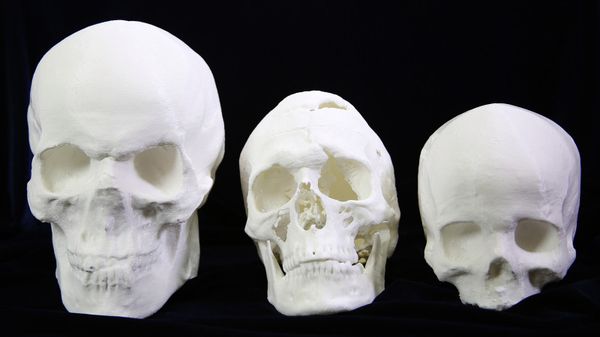
Credits
Beyond the Bone Box was funded by a Harvard Library S. T. Lee Innovation Grant starting in 2018. The project was designed by Warren Anatomical Museum Curator, Dominic Hall, and implemented by Museum Programming Assistant Alyssa Brophy. Initial Bone Box case studies were curated by Hall, Anne Harrington, Ph.D (Franklin L. Ford Professor, Faculty Dean, Pforzheimer House, Harvard University), and Julie Reed (Teaching Assistant in History of Science, Harvard University) with input from the spring 2019 students of Harvard HS 97.
Further collaboration on the case of Phineas Gage was provided by Dana A. Stearns, M.D. (Assistant Professor of Emergency Medicine, Director of Anatomy Education for Pathways, Massachusetts General Hospital, Harvard Medical School) and Sabine Hildebrandt, MD (Associate Professor of Pediatrics, Lecturer on Global Health and Social Medicine, Boston Children’s Hospital, Harvard Medical School). Administrative and description support was providing by Emily Gustainis (Deputy Director, Center for the History of Medicine, Countway Library of Medicine) and Jessica Sedgwick (Collections Services Archivist, Center for the History of Medicine, Countway Library of Medicine). Graham Holt (Director of the Office of Creative Solutions, Laboratories of Cognitive Neuroscience, Boston Children's Hospital) developed the initial Phineas Gage 3D print from CT scans taken by Peter Raitu and Ian Talos (Surgical Planning Laboratory, Brigham & Women’s Hospital), and provided technical guidance for the 3D printing workstation at the Center for the History of Medicine.
Bigelow-Wallis and Warren-Kaula Teaching Watercolors
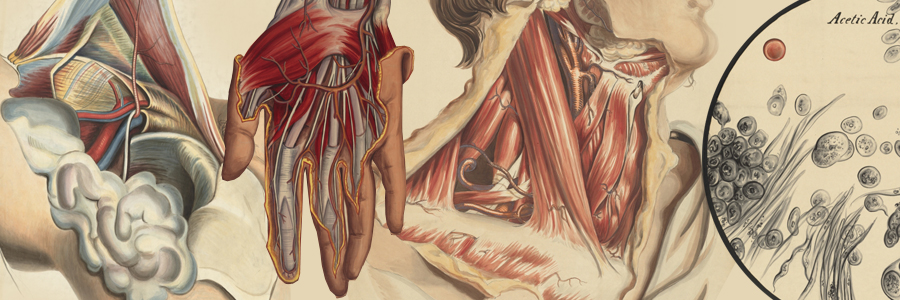
The Bigelow-Wallis and Warren-Kaula watercolor collection is a series of works in Warren Anatomical Museum originally compiled by the Harvard Medical School Department of Anatomy for use in the anatomical lecture hall. The average size of the watercolors is 69 cm wide x 100 cm high and the works are mounted with metal grommets in the corners for hanging. The bulk of the collection is the 189 works commissioned by Harvard Medical School Professor of Surgery Henry Jacob Bigelow from lithographer Oscar Wallis between 1849 and 1854. The remaining 46 watercolors in the collection were painted circa 1894 by William Jurian Kaula for Harvard Medical School Moseley Professor of Surgery John Collins Warren. The Department of Anatomy combined the two physician-artist collaborations into one teaching series within the Warren Anatomical Museum in the early 20th century.
Body of Knowledge, A History of Anatomy (in 3 parts)
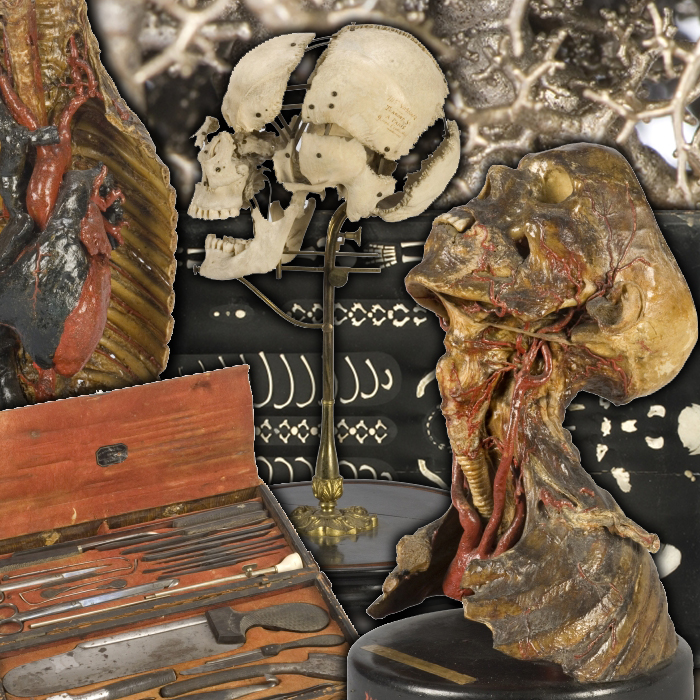
Submissions from the Center of the History of Medicine to the physical and electronic components of the exhibition, Body of Knowledge, A History of Anatomy (in 3 parts), on display from March 6, 2014 to December 5, 2014 at the Collection of Historical Scientific Instruments and in the companion Gallery Guide.
Broad Foundation
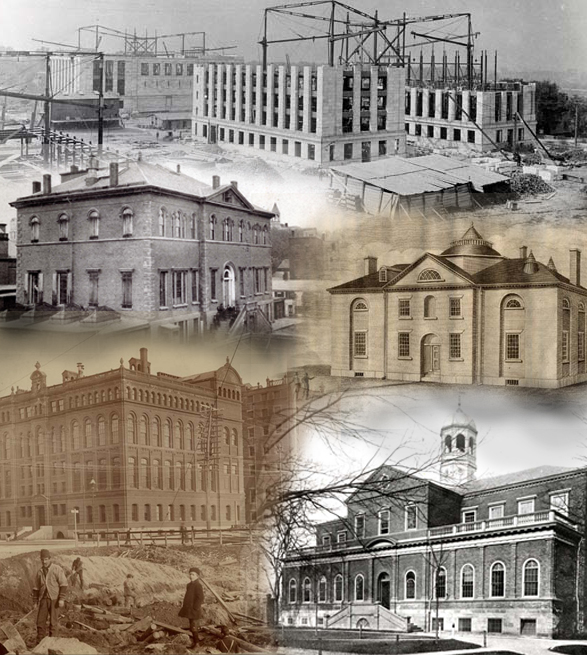
In 1883, Harvard Medical School moved into new quarters on Boylston Street in downtown Boston, and for the first time in a century, the school was able to provide adequate laboratory and clinical space for its students. A promotional brochure from that period describes the rationale behind the new building as “to secure for each student that direct personal supervision and instruction, forming such a marked feature of the courses offered, especially in the thorough laboratory training, which is so essential in securing a broad foundation for future clinical work.”
This “broad foundation” has been the hallmark of Harvard’s efforts in medical education from the origins of the institution in the late 18th century to the present day. Now, in the 21st century, with the centennial of the dedication of the Longwood campus and the opening of the New Research Building on Avenue Louis Pasteur, Harvard's tradition of providing excellence in medical education and research continues. This exhibit, “A Broad Foundation,” traces the evolving history of medical education at Harvard—its faculty, students, curricula, and facilities—from the establishment of the school and its earliest days down to its current flourishing state.
Charles Lowell's Hip: An Early Case of (alleged) Medical Malpractice
Charles Lowell infamously suffered a well-publicized and controversial hip dislocation. A young man at the time of the incident in 1821, he charged his physicians with malpractice and negligence, arguably helping to start a wave of medical lawsuits. The case was filled with speculation and accusation, but never arrived at a satisfactory conclusion. Years after the court was adjourned, however, Lowell stood to testify as the final witness when, upon his death, his pelvis was prepared and donated. Never pleased with the judicial resolution to drop the case, he advocated for a post-mortem examination in the hopes that the bone could expose all unanswered questions, and prove once and for all that he had been wronged.
Complementary Therapies: Masterworks of Chinese and Botanical Medicine


While large numbers of Americans are now seeking health care and therapies outside of mainstream Western medicine, there is a long and rich history of alternative medical treatments. Botanical medicine, which uses herbs and natural remedies, and traditional Chinese medicine, which combines botany with practices like acupuncture and moxibustion, are two of branches of alternative medicine – "complementary therapies" – that are believed to work alongside conventional treatment. Complementary Therapies brings to light some of the treasures of the collections of the Center for the History of Medicine and includes the first Western texts dealing with Chinese medicine and acupuncture; a copy of John Gerard's 1636 Herball; rare publications from the Thomsonian botanical movement; Lam Qua watercolor studies of tumor patients treated in Canton in the 1840s; and a model of Aké, a Chinese youth with a parasitic twin, and an account of his case from 1821.
Conceiving the Pill
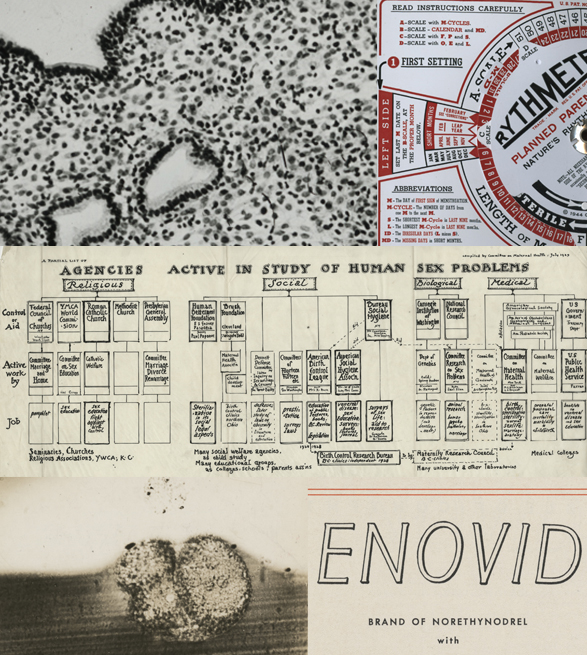
The work of John C. Rock was central to the development of the science of reproductive medicine. His biographers Margaret Marsh and Wanda Ronner point out that in 1926, when Rock became the director of the sterility clinic at the Harvard-affiliated Free Hospital for Women,
"Surgeons could view a woman’s pelvic organs only if they cut open her abdomen… Doctors had no way to predict accurately when a woman would ovulate. Medical researchers and practitioners understood only dimly the process in which a human sperm fertilized an egg. They knew even less about such things as the length of time it took the newly fertilized egg to find its way into the uterus and successfully implant. And although scientists knew about the existence of the so-called female sex hormones, estrogen and progesterone, they had not yet figured out how to isolate the latter or synthesize either of them." (The Fertility Doctor, 3)
This exhibit, Conceiving the Pill, follows the work of John C. Rock and other notable scientists like Arthur T. Hertig and Gregory Pincus as they endeavored to conceive and deliver the birth control pill.
Corpus Delicti: the Doctor as Detective
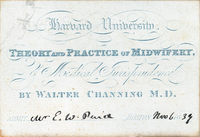
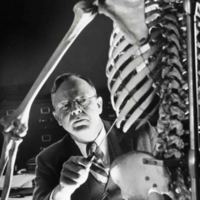 Although seemingly distinct disciplines, medicine and law—as medical jurisprudence, forensic medicine, or legal medicine—have been intertwined for centuries, and legal medicine itself encompasses a wide range of subjects, such as toxicology, psychiatry, chemistry, pathology, anatomy, autopsy, and suicide.
Although seemingly distinct disciplines, medicine and law—as medical jurisprudence, forensic medicine, or legal medicine—have been intertwined for centuries, and legal medicine itself encompasses a wide range of subjects, such as toxicology, psychiatry, chemistry, pathology, anatomy, autopsy, and suicide.
Corpus Delicti tells the story of Harvard Medical School's involvement with medical jurisprudence and the origins, rise, and, eventual fall of its Department of Legal Medicine–-in some ways a victim of its own success–-along with the individuals--George B. Magrath, Alan Richards Moritz, Richard Ford, and Frances Glessner Lee–-who shaped, developed, and promoted its work.
Family Practice: The Warrens of Harvard Medical School

The history of medicine in Boston and, in particular, at Harvard Medical School is often a sort of family chronicle. The same famous names—Putnam, Shattuck, Bowditch, Storer, Cheever, Wyman—appear over the years as members of new generations assume roles in the profession of their parents and grandparents.
But there is one Boston family—the Warrens—whose contributions range from the foundation and first lectures of Harvard Medical School and the construction of its campus to the development of innovative surgical techniques and the performance of one of the most famous operations in American medical history. The research, writing, teaching, and medical and surgical labors of the five celebrated Doctors Warren have left an indelible mark on the development of Harvard Medical School and indeed shaped the very course of medicine and medical education in this country over the past two hundred years. This fall, as the Countway Library of Medicine assumes responsibility for the exhibits, specimens, and instruments of the Warren Museum, a display of rare books, manuscripts, photographs, artwork, and artifacts from the collections of Harvard Medical School and the Boston Medical Library has been mounted at the Countway Library as a tribute to the members of this illustrious family and their tradition—in every sense, a family practice—of contributions to American medicine.
Fifteeners
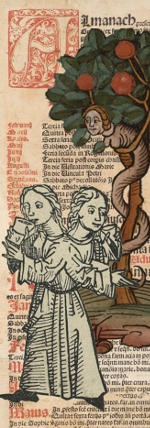
Incunabula or incunables are the very first examples of books, pamphlets, and broadsides printed with moveable type in Western Europe. They range from the very first examples of the two-column Latin Bible produced by Johann Gutenberg in the 1450s to works printed through the end of the year 1500. The term "incunable" derives from the Latin word cunabula for "cradle" or "origin", hinting at their status as the earliest of all books. Incunabula are also sometimes referred to as "fifteeners" from their appearance in the fifteenth century.
Despite their European origins, incunabula can be found in library collections throughout the United States today, with the greatest concentration in the Library of Congress. While the largest collection of fifteeners at Harvard—more than 2,600 titles—may be found in Houghton Library, the Countway Library of Medicine, with over 800 items, holds the largest collection of medical incunabula in this country and one of the finest collections of this type in the world.
In 2002, the Countway Library embarked on an ambitious and long-needed project to describe and catalog fully its holdings of incunabula and make online descriptions of these items accessible to scholars and researchers for the first time. All of the books and woodcuts in this exhibit have been drawn from the collections of the Boston Medical Library and the Harvard Medical Library and have one common element—each is at least five hundred years old. The Fifteeners highlights some of the extraordinary treasures in the Countway's incunabula collection and allows the public a glimpse of these rarest of printed medical works.
From the Everyday to the Extraordinary: Uncovering the Warren Anatomical Museum Backlog
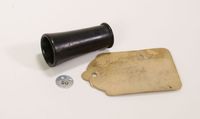
Like many museums, the Warren Anatomical Museum (WAM) had a backlog. This backlog was made up of over 100 boxes of medical instruments. Most of these boxes came from an offsite storage unit that closed in the 1990s. A few came from the former WAM exhibit space in Gordon Hall. The rest came from unknown sources. Broad categorical terms were written on the outsides of the boxes. Other than this, very little was known about the contents of the backlog.
In 2019, an inventory of the instrumentation backlog was created. This inventory revealed a total of 1649 objects, which spanned a wide range of subjects across multiple centuries. The majority of the collection was made up of commonly used medical instruments from the 19th and early 20th centuries. There were also objects dating as far back as the early 18th century and as recent as the 1970s. Many medical specialties were represented in the collection. There were also a few particularly noteworthy objects in the collection that are associated with important moments in medical history. Together, these objects shed light on both the history of medicine and the history of the Warren Anatomical Museum.
This exhibit examines the contents of the medical instrumentation backlog, from the everyday to the extraordinary.
Galton's Children
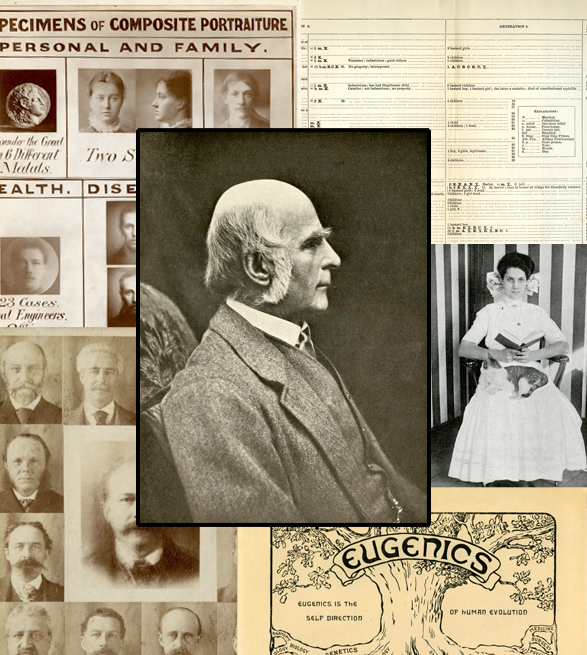
Is it possible to improve the human race through scientific means, or, more specifically, can we breed a better human?
Galton’s Children: the Rise and Fall of the Eugenics Movement examines the social phenomenon of eugenics from its origins and period of greatest influence in the early 20th century, to discredit in the 1930s and its associations with the racial hygiene policies of Nazi Germany, and the persistence of eugenic ideas today.
Gilt by Association
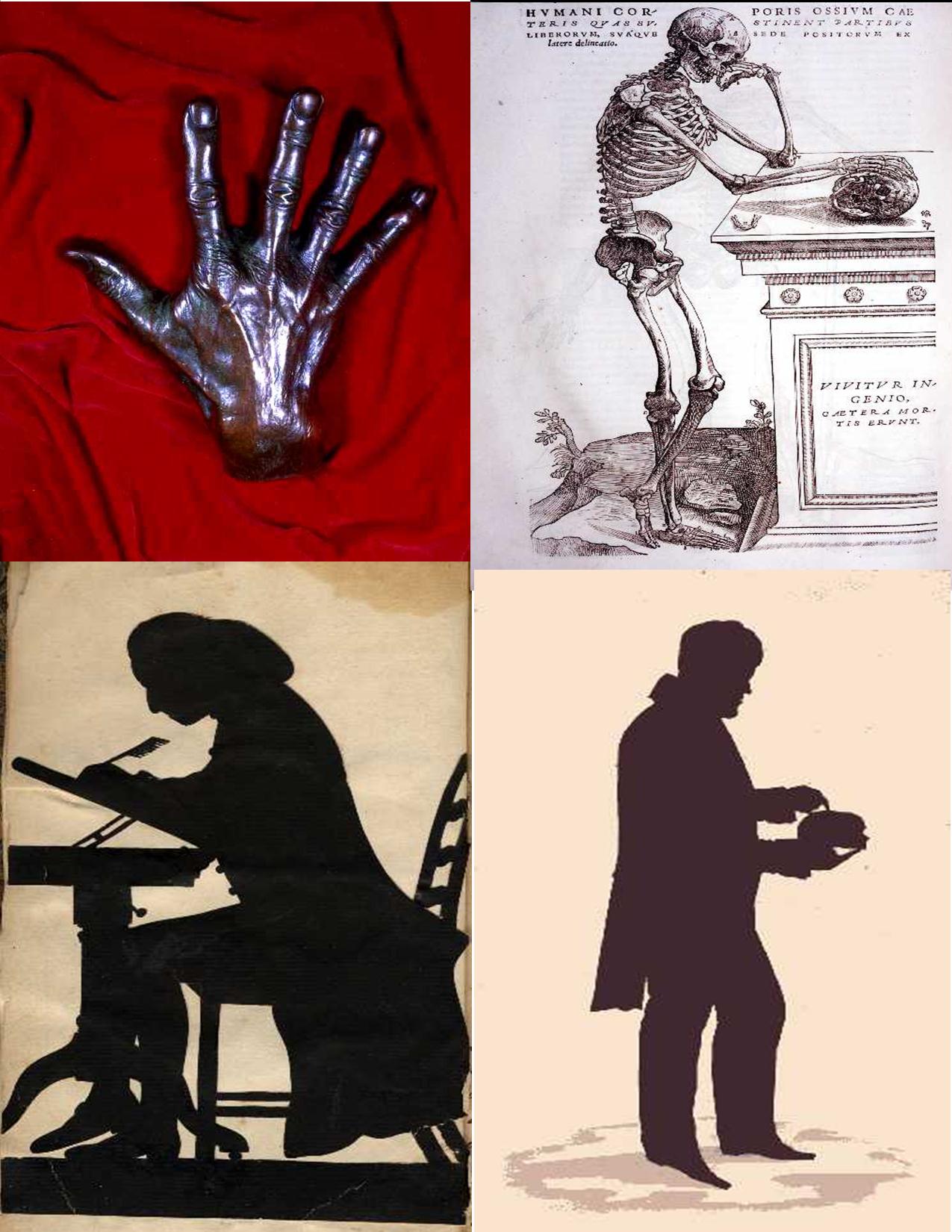
Just what makes something rare? While medical books or letters or instruments may be intrinsically interesting, offer historical insight, or fascinate simply by virtue of their age or scarcity, these items all acquire an added luster when we know where they came from and who owned them, used them, or even just touched them. This added dimension, or association value, can transform even the most mundane item into an object of unparalleled rarity and distinction.
The Francis A. Countway Library of Medicine houses one of the world’s largest collections of books, manuscripts, prints and photographs, artwork, artifacts, and museum specimens documenting the history of medicine from the Middle Ages to the present day. This exhibit, Gilt by Association, commemorates the drama and richness of medical history and allows the public a glimpse of extraordinary treasures associated with some of the most renowned figures and events in medicine. From Presidents in the White House to the Czars of Russia in the Winter Palace at St. Petersburg, Gilt by Association celebrates 800 years of milestones in the history of medicine through the rich and varied collections at the Countway Library of Medicine.
Grand Delusion?
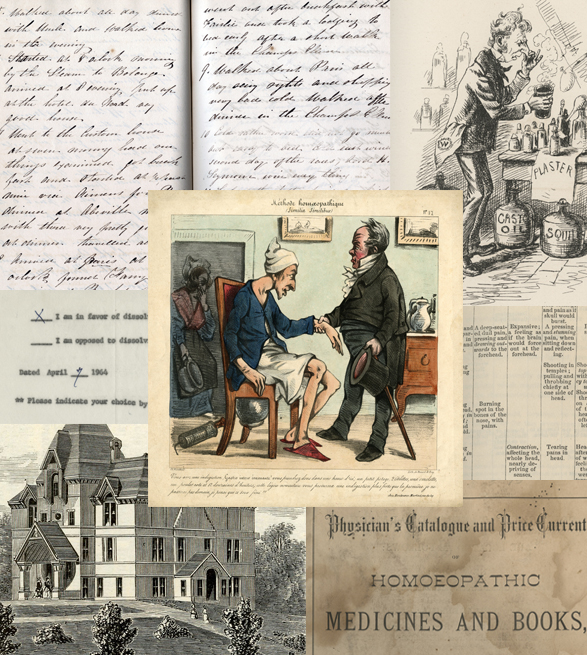
To support and develop homeopathy in the face of opposition from its detractors, the adherents of the movement created an entire medical establishment—books, journals, schools, hospitals, asylums, sanitariums, dispensaries, professional societies, national and international organizations, pharmaceutical manufacturers, publishing firms, and even life insurance companies—in parallel with that of regular practitioners. Grand Delusion? traces the developments of the history of homeopathy in Boston and Massachusetts and the contributions and experiences of its practitioners, in both conflict and also concert with their regular medical colleagues.
Grete L. Bibring: The Modern Woman
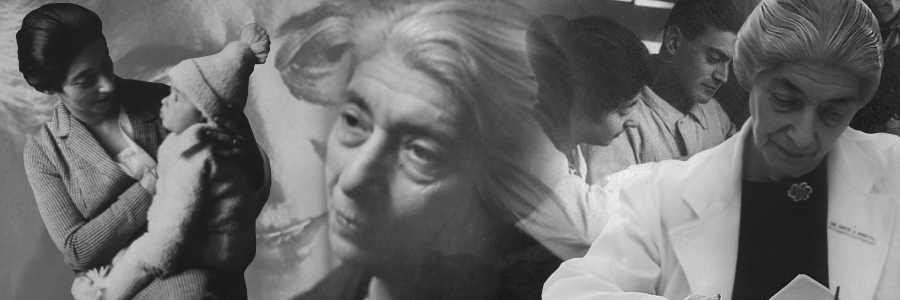
In the 1970’s, Dr. Grete L. Bibring created a seminar for Radcliffe College called ‘The Educated Woman’. A small group of students would gather to discuss the issues surrounding educated women and their lives. The concept of the ‘modern woman’ came to portray the dual roles of family and career that women had one point been forced to choose between. Dr. Bibring was a mentor for the emerging modern woman, understanding the demands and rewards of maintaining both a career and family.
Born in Vienna just before the 20th century, Grete L. Bibring would earn the honor of being the first female full clinical professor at Harvard Medical School in 1961. As a part of the “second generation” of Freudian scholars, her achievements include her appointment as Psychiatrist-in-Chief at Beth Israel Hospital in 1955, professional activities in numerous psychiatric organizations, such as the psychoanalytic societies of Vienna, London, and Boston and psychiatric consultant of the Children’s Bureau in Washington D.C. She was highly influential in integrating psychiatric principles into general patient care. Her passion permeated her other roles working with students, residents, physicians, social workers, and nurses across the globe. Dr. Bibring’s work continued well after retirement with a thought provoking seminar at Radcliffe, publication of multiple articles, and her dedication to patient care. This exhibit celebrates her life and her influence on the generations of medical, psychiatric, and social services professions.
Jars of "Art and Mystery": Pharmacists and their Tools in the Mid-Nineteenth Century
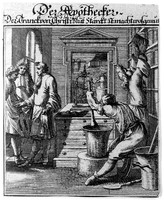
Jars of “Art and Mystery” will take you on a journey through the history of the apothecary profession from the seventeenth century to the mid-nineteenth, exploring how the role of the apothecary changed over time. You will learn about the nineteenth-century pharmacist and chemist, the tools they used, the drugs they sold, and what ailments they treated. Get a sneak peek inside a pharmacy of the time, and investigate apothecary jars and the remedies they contained. Follow the exhibit through to the end and you’ll have a chance to prove your worth as a pharmacist by taking an apothecary’s exam!
Be sure to click through the links to the right from beginning to end in order to be fully prepared for the quiz.
The apothecary jars and pharmacists' tools featured in this exhibit are from the Apothecary Jar Collection of Rosalind and Elbert McLaury, M.D., and Suzanne and Harold Spear, M.D., held at the Francis A. Countway Library of Medicine. The collection was donated by Suzanne and Harold Spear.
Language of the Age: Depictions of Medicine in Graphic Satire
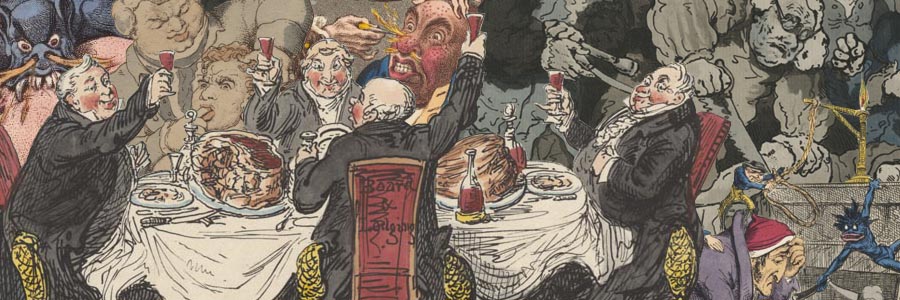
"Satire was the language of the age...In the eighteenth century there was a great vogue for satirical prints- political and social. This was the golden age of the English engraver...caricature shops had a popularity of their own. Their prints were virtually the only pictorial rendering of the flow of events, moods and fashions. Especially, they reflect the social attitudes of the day."
Leading by Teaching: Elizabeth D. Hay and Lynne M. Reid
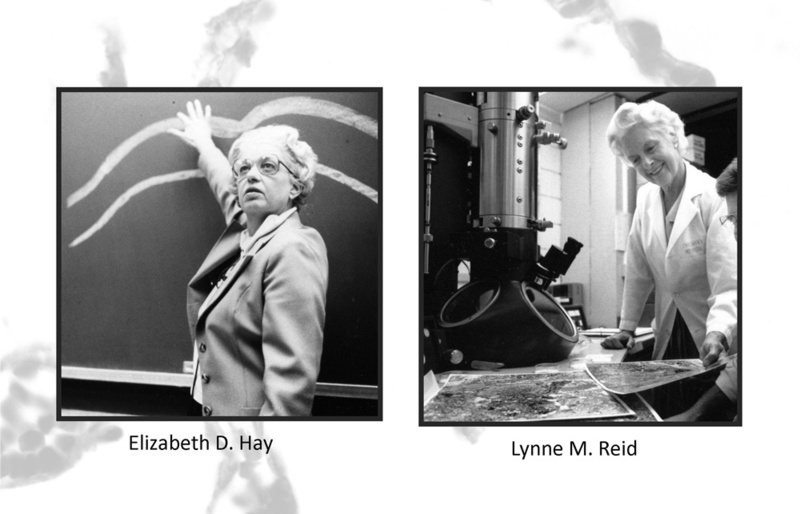
The Archives for Women in Medicine is celebrating the recent opening of two outstanding new collections: The Elizabeth D. Hay Papers, and The Lynne M. Reid Papers. Highlighting the importance of networks, mentors, and communities of support, this exhibit includes selections that reflect Hay and Reid’s roles as teachers, mentors, and champions for women in medicine. The Hay and Reid collections contain a rich range of materials, including correspondence, lectures, research records, teaching materials, writings, and photographs. Such records document the experiences and contributions of these two influential pioneers. In the ongoing effort toward gender equity in medicine and science, Hay and Reid were early women leaders who made it a point to teach, encourage, and inspire generations of scientists who followed.
By making these collections available for discovery, access, and interpretation, the Archives for Women in Medicine is connecting scholars with unique evidence of the achievements and struggles overcome by this cohort of women -- evidence that is essential to our understanding of the evolution of medicine. We are preserving and sharing this evidence to ensure that their efforts will continue to inspire future generations.
The documents and images in this exhibit are from various collections of the Archives for Women in Medicine.
Lost Museum of Harvard's Dental School
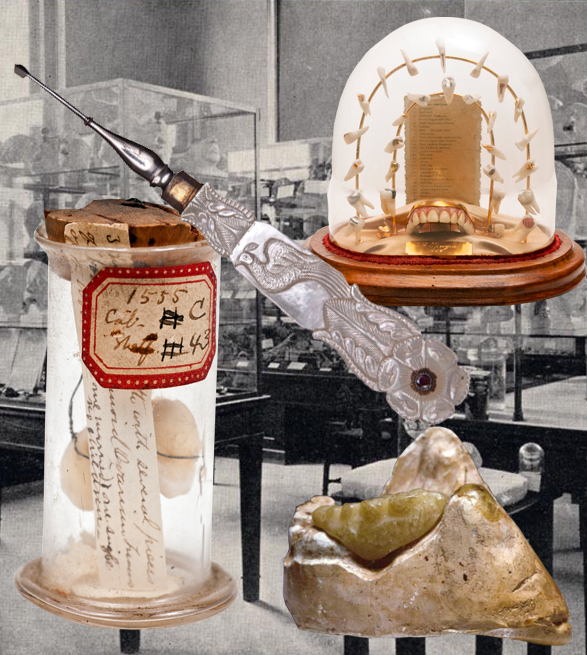
Nearly as old as the Dental School itself, Harvard's Dental Museum was originally intended to display specimens of mechanical dentistry prepared by graduating students. It soon became a repository for specimens of human and comparative odontology, pathology, and anatomy, instruments, models, photographs, and lantern and stereoscopic slides. The Museum also housed some unusual historical items.
The published Announcement of the Dental School for 1937 has a brief but detailed description of the Dental Museum, and information about the collection had been included in the annual catalogs for the past sixty years. In the following year's edition of the Announcement, however, no entry for the Museum is included, and one never appears again. Just what happened to Harvard's Dental Museum, and where are its collections now?
Magical Stones and Imperial Bones
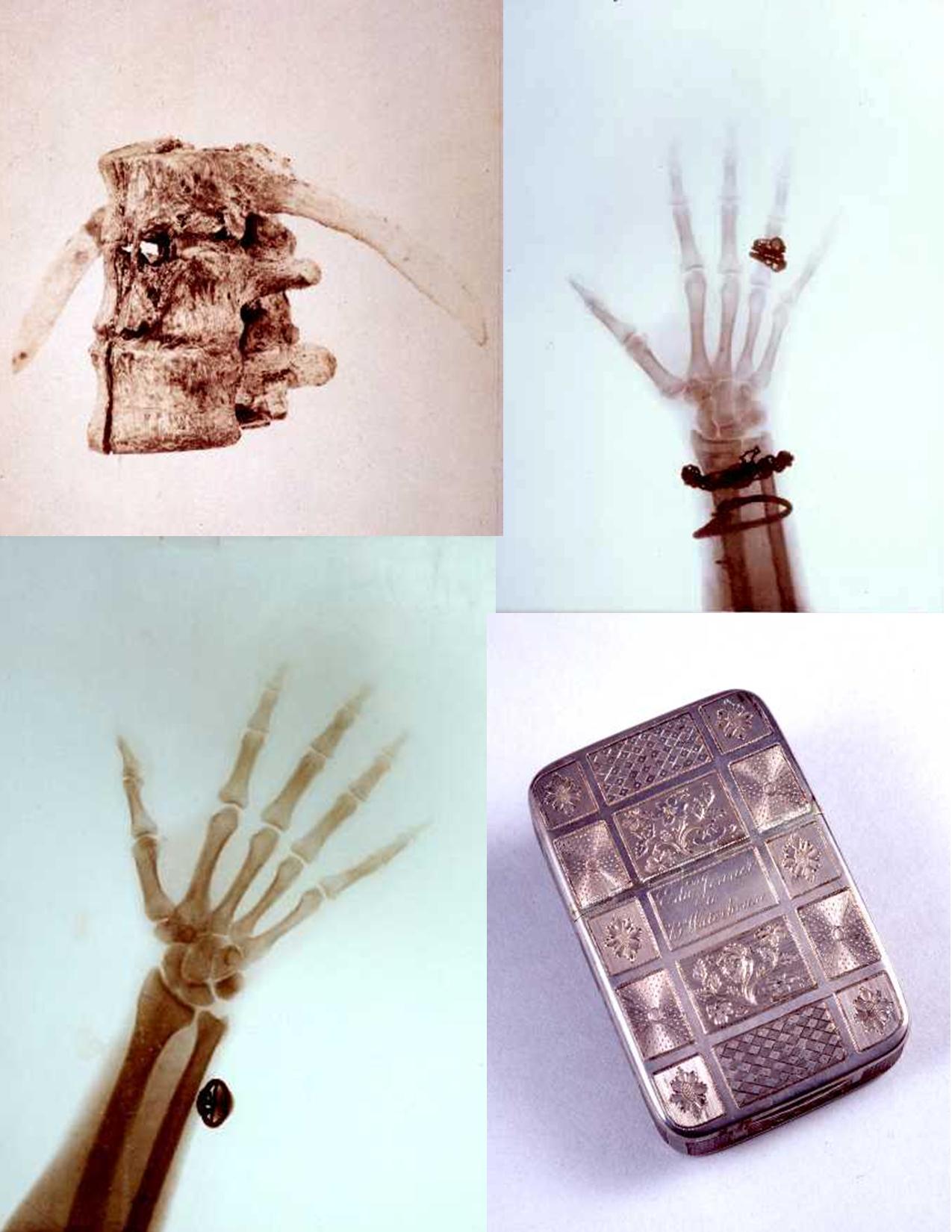
Magical Stones and Imperial Bones highlights just a few of the extraordinary resources available here in the Countway Library of Medicine. Touching on aspects of medicine’s history and impact on public health, from ancient medications to smallpox vaccinations and the development of modern antibiotics, from medical education to Arctic exploration, this selection of books, manuscripts, prints, photographs, and artifacts from the Boston Medical Library and the Harvard Medical Library represents just a fraction of the holdings here in the Rare Books and Special Collections department. Ranging from the thirteenth century to the twentieth, from the Winter Palace of the Czars of Russia to the assassination of President Garfield, Magical Stones and Imperial Bones celebrates six centuries of significant developments in the history of medicine as documented through the rich and varied collections here at the Francis A. Countway Library of Medicine.
Mary Ellen Avery: Highlights from Her Collection
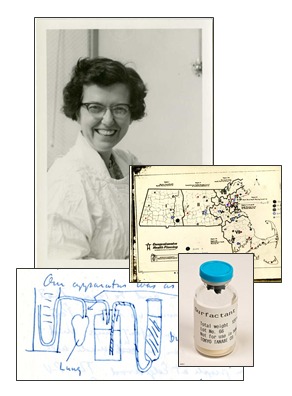
The Mary Ellen Avery Papers are one of the founding collections of the Archives for Women in Medicine. This exhibit shares just a small selection of letters, photographs, diaries, and other items which help to document Avery’s pioneering career and contributions to pediatrics. Avery is known for her 1959 discovery of the cause of respiratory distress syndrome (RDS) in premature infants: the lack of lung surfactant, a foamy fluid which creates surface tension and allows the lungs to inflate. This discovery led to the development of a treatment for RDS in newborns. By 2005, this treatment had decreased the number of infant deaths from RDS in the U.S. to 860 annually, down from almost 10,000 a year in 1970.
Avery was one who meticulously documented, often scribbling her personal reflections on the backs of meeting agendas or napkins, or typing up her own accounts of various events just for, in her words: “the historical record.” Over the years she built a rich collection of papers and records that document not only her significant achievements, but also the warmth, humor, and courage that made her an inspiration and a role model to many.
For more information about the collection, view the Finding Aid to the Mary Ellen Avery Papers.
Share Your Story
Submit your own stories or pictures related to Mary Ellen Avery to our Visitor Comments section, or send us feedback or questions about the exhibit. View other's stories here.
Maximizing Microbiology: Molecular Genetics, Cancer, and Virology, 1913–2013
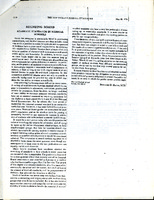
Today, even after the “completion” of the Human Genome project, a broad range of disciplines wrestle with the investigation and implications of the workings of the human genome. How is information encoded and regulated? What do such findings say about health and human behavior? The Maximizing Microbiology project opened access to a total of seven manuscript collections that, among other things, demonstrate the reach of Harvard Medical School (HMS) faculty concerning the origins of molecular genetics at a critical time in the field’s development. These collections are central to understanding and contextualizing the evolution of molecular genetics in the United States, specifically: factors affecting the fidelity of the genetic code; the viral etiology of cancer; bacterial physiology, metabolism, and virology; retroviruses and AIDS; and bacterial carbohydrates and infections.
The collections include the records of HMS Bacteriology and Immunology professor Bernard D. Davis (1916-1994) whose research led to advances in microbial physiology and metabolism (H MS c190); HMS Biological Chemistry and Molecular Pharmacology professor Arthur B. Pardee (1921-), whose research impacted our understanding of messenger RNA and the molecular biology of cancer; Yale Professor of Microbiology Francesc Duran i Reynals (1899-1958), who research focused on the relationship between viral infection and cancer (H MS c195); HMS American Cancer Associate Professor Luigi Gorini (1903-1976), whose research focused on bacterial regulation, ribosome, and proteolysis (H MS c468); HMS Microbiology and Molecular Genetics professor Harold Amos (1918-2003), who studied bacterial metabolism and animal and bacterial virology (H MS c476); Harvard T.H. Chan School of Public Health Professor of Health Sciences Myron Essex (1939-), whose research has focused on the link between retroviruses and immunosuppressive disease in animals and human beings, including HIV-AIDS (H MS c466); and HMS Microbiology and Immunology professor Dennis L. Kasper (1943-), who studies bacterial infections and bacterial carbohydrates, including those of group B Streptococcus and bacteroides fragilis, among others, as well as the interactions of the microbiota with the mucosal and systemic immune systems (H MS c404).
Maxwell Finland: A Centennial Celebration
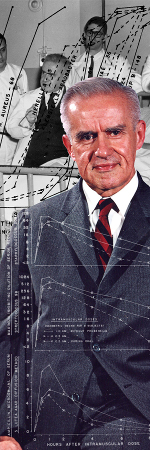
Maxwell Finland's career in infectious diseases spanned more than 50 years, from his appointment as the Pneumonia Resident at Boston City Hospital in 1928 until he left the hospital in 1983 and died in October 1987. A plaque in the Maxwell Finland Laboratory for Infectious Diseases at the Boston Medical Center summarizes his accomplishments:
He exemplified the finest qualities of physician, teacher and investigator. His association of more than 50 years with the Boston City Hospital began in 1926 and culminated in his appointment as Director of the Harvard Medical Services and the Thorndike Memorial Laboratory. He was author or co-author of more than 800 scientific papers including pioneering studies of the pneumococcus and diagnosis and management of pneumonias, clinical pharmacology of antimicrobial agents and hospital epidemiology. He was mentor and counselor to more than 100 fellows in infectious diseases who continue his tradition of scientific excellence.
On 15-16 March 2002, friends, colleagues, and fellows of Maxwell Finland gathered in Boston to celebrate the 100th anniversary of his birth. The occasion marked the didcation of the Maxwell Finland Conference Room at the Countway Medical Library, Harvard Medical School, Boston, and a scientific program highlighting the contemporary importance of his contributions. This exhibit, which includes pictures of Finland as well as reminiscences from friends and colleagues, tells the story of this teacher, role model, mentor, friend, and father-figure, and traces his legacy through to the present.
Monumental Success: The Centennial of the Harvard Medical School Quad
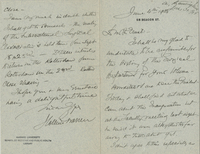
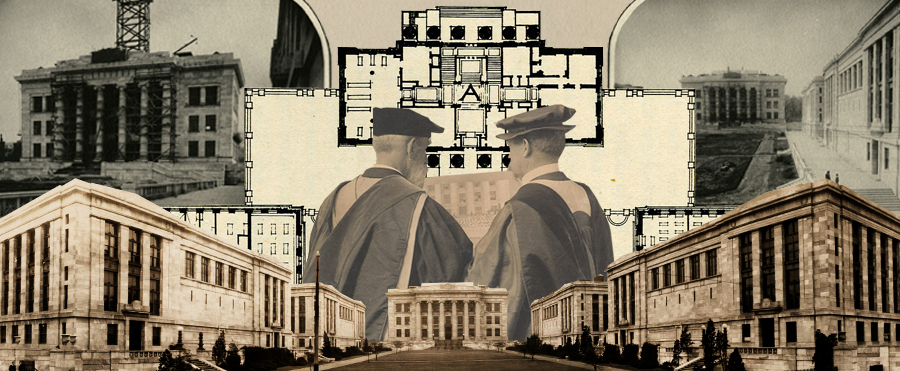
When the Harvard Medical School moved into its new home on Boylston Street in the fall of 1883, the building was thought to be sufficient for "many generations" of students, but in fact the limitations of the Boylston building and the increasing number of both students and faculty prompted the decision to move and build again. By the opening of the 20th century, the Medical School had nearly 600 matriculants—nearly three times the number in 1883—and a faculty of 40 with over 100 additional instructors, lecturers, and assistants in 24 departments—with insufficient laboratory space for many of them. A new plan of study, adopted in 1899, increased the amount of student laboratory work as well.
At its meeting on February 3, 1900, the Faculty of Medicine resolved that, rather than spread the school out physically, "the interests of Medical Education in its broadest sense will be best served by the greatest practicable concentration in one locality of the buildings devoted to instruction, since by this means teachers will be helped, students stimulated, loss of time prevented, and a great dimunition of expense secured both for plant and for maintenance." The Faculty also proposed that a hospital be created under the care of the Medical School, following the model of Johns Hopkins Medical School in Baltimore. Later that spring, the Faculty and the Harvard Corporation agreed to purchase the Francis estate for $600,000. This parcel of land—over 26 acres between Longwood Avenue and Francis Street— would be the site of the new medical campus.
Nature of Every Member: An Anatomy of Dissection at Harvard Medical School
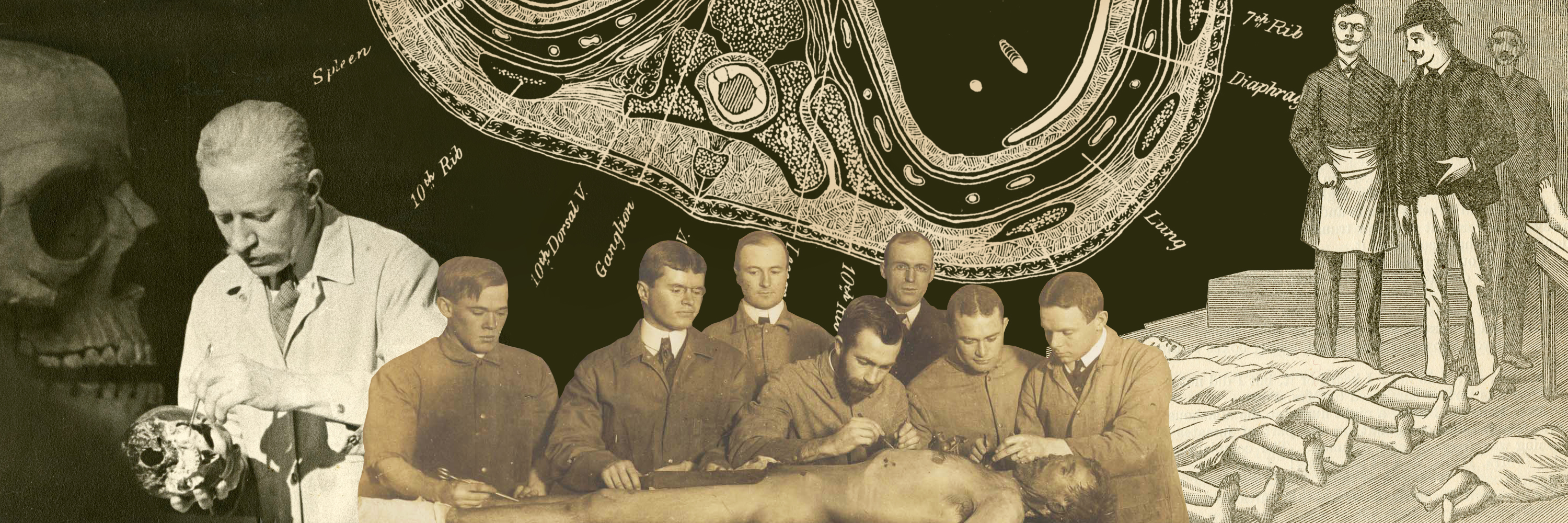
Why study human anatomy? To John Hall, writing his poem An Historicall Expostulation, in 1565, it was the chief of medical arts which had to be mastered “if ye will cure well anything.” Anatomy was one of the three first areas of medical study at Harvard, and John Warren, the first member of the faculty, was a renowned anatomist and surgeon. And though Oliver Wendell Holmes could maintain by 1861, that “human anatomy may be considered an almost exhausted science. From time to time some small organ which had escaped earlier observers has been pointed out… but some of our best anatomical works are those which have been classic for many generations,” anatomy through dissection continued to be studied and taught to first-year medical students, and it still holds a place in the modern curriculum today. The Nature of Every Member chronicles the long and distinguished history of the study and teaching of human anatomy through dissection at Harvard Medical School, moving from the very foundation of the school to the present day. Coupled with teaching through human dissection are the changes and developments in anatomical legislation, as the illicit practice of grave-robbing for anatomical study gives way to legal instruments of anatomical gift for science.
Naval Medicine and the War of 1812
Osteological preparations in the Warren Anatomical Museum exhibit represent wounds received in naval combat during the War of 1812, including the battles between the Constitution and Guerriere, Constitution and Java, and the Enterprise and the Boxer.
New Treasures : Recent Acquisitions at the Center for the History of Medicine
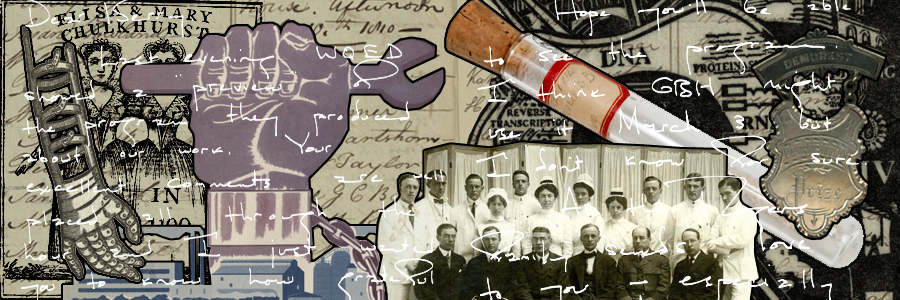
The Countway Library is built from gifts—gifts large and small, made over many years. It was the generosity of Sanda Countway in 1958 which provided over three million dollars for a building and allowed Harvard Medical School and the Boston Medical Library to ally their collections, forming the largest academic biomedical library in the country.
The collections of the Countway reflect the generosity of two centuries. John Collins Warren, James Jackson, and other members of Harvard's early faculty began to donate books to form a medical library for the students in 1816. In 1889, just a few years after the foundation of the Boston Medical Library, Oliver Wendell Holmes contributed his personal collection of over 900 rare medical works, laying the cornerstone for a remarkable historical collection. The Godfrey M. Hyams Trust presented the Boston Medical Library with $25,000 in 1930 to build and maintain a collection of rare books and manuscripts on Jewish medicine and science, and the core of the library's renowned collection of incunables was the bequest of over 200 titles from William Norton Bullard in 1931. The medical and surgical library of the Warren family was bequeathed to Harvard by John Warren in 1928, the George Burgess Magrath Library of Legal Medicine was established by a gift of Frances Glessner Lee in 1933, and the Historical Collection in Radiology has its origins in the donation of the personal collection of Lloyd E. Hawes in 1969. Even the Warren Anatomical Museum now here in the Countway was a gift of John Collins Warren to Harvard University in 1847. These are just a few of the major donations which have built and augmented the collections over the past two hundred years.
Such generosity is not just a thing of the past, though, and extraordinary gifts continue to enhance the already glittering assortment of books, manuscripts, prints, photographs, artwork, artifacts, and specimens preserved in the library, archives, and museum collections at the Countway's Center for the History of Medicine. All the items on display in this exhibit, New Treasures, were acquired by the Countway between the rededication of the library in 1999 and 2009. Many are gifts from individuals and members of the faculty, while others have been acquired by purchase with funds and donations made by generous contributors and friends, and this exhibit honors the thoughtfulness and generosity of all these donors. From the earliest printed medical works to modern scientific research notebooks, ranging from the treatment of smallpox to responses to the AIDS epidemic, and embracing such diverse areas as embryology, teratology, psychiatry, hematology, surgery, disability, student life, and humor, these new treasures of the Countway are notable and worthy additions to the existing collections and help to further our mission to promote research and scholarship in the history of medicine and increase the understanding of the role medicine plays in the larger society.
Noble Work for a Worthy End : Harvard Medical School in the First World War
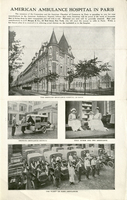
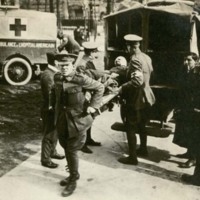
Although the United States did not enter World War I until April 1917, American medical personnel were active in war relief efforts almost from the beginning of the conflict. Harvard Medical School—its faculty and its graduates—played a key role in this work, providing staff for French and English hospitals and military units, and these early endeavors provided valuable experience once America came into the war and the need to organize and staff base and mobile hospitals for the U.S. Army became critical to the war effort.
Noble Work for a Worthy End charts Harvard's participation in medical relief work and experiences in military medicine and surgery through the wealth of documentation—letters, diaries, photographs, publications, and ephemera—preserved by the men and women who volunteered their time and labor, sometimes at great sacrifice, to helping the sick and wounded of the first World War.
Owners and Donors: Building the Rare Book Collection at the Countway Library of Medicine
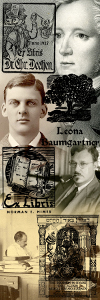
The Countway Library is built from gifts—gifts large and small, made over many years. The collections of the Countway reflect a tradition of generosity spanning nearly two hundred years.
Such generosity is not just a thing of the past, though, and extraordinary gifts continue to complement the already vast array of books, manuscripts, prints, photographs, artwork, artifacts, instruments, and specimens preserved in the collections of the library, archives, and museum here at the Center for the History of Medicine. Owners and Donors honors just a few of the individual men and women who have contributed collections or even single items to enhance the rare book collections here at the Countway over the years.
Plastic Surgery in Boston: Then and Now
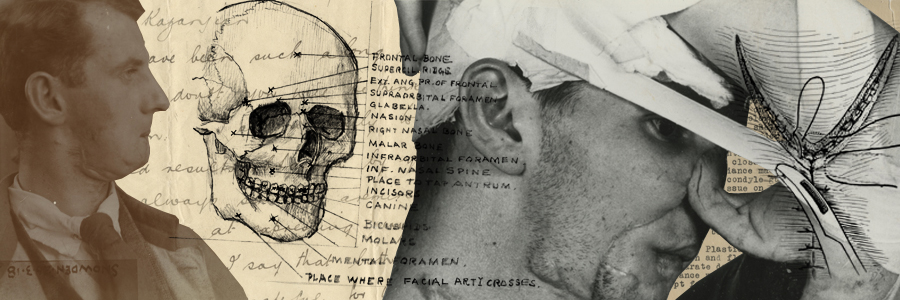
Plastic surgeons operate on the entire body, from the scalp to soles of the feet. Its primary aims are to improve function and appearance. For centuries in Asia and Europe, plastic surgery had been performed to improve the appearance of patients mutilated by disease or by punishment for crime. During the past two centuries plastic surgeons have pioneered many innovative techniques that today are used in all of types of surgery. Though Boston has always been considered a major center of American medicine, it is not widely known for its contributions to plastic surgery. But in fact, Boston has been the location of many "firsts" in plastic surgery. Plastic Surgery has been a critical part of the city's rich medical history and has contributed in its unique way to establish Boston as a vital center of American medicine. This exhibit explores the role played by Boston physicians such as J. Mason Warren, George H. Monks, Varaztad H. Kazanjian, Bradford Cannon, and Joseph E. Murray in the history of plastic surgery.
Plethysmograph Research in the Department of Physiology at the Harvard T.H. Chan School of Public Health, 1950-1980
This exhibit uses three objects, two plethysmographs and a spirometer, to celebrate the legacy of the Department of Environmental Health at the T.H. Chan School of Public Health.
Reconstructing Lives
On December 23, 1954, Joseph E. Murray performed the world's first successful organ transplantation at Peter Bent Brigham Hospital in Boston, MA. The origins of that surgery can be found at the Army's Valley Forge General Hospital during World War II, where Murray, working on the plastic surgical service, observed failed skin grafts on burned servicemen. This experience led him to explore more broadly the mechanism of organ rejection.
Murray went on to revolutionize organ transplantation through the use of immunosuppressive drugs, before shifting later in his career to plastic and reconstructive surgery, a field in which he also became an innovator and national leader. He headed the plastic surgery departments at the Peter Bent Brigham Hospital and Children's Hospital, Boston. At Harvard Medical School he directed the Surgical Research Laboratory, where the techniques and protocols for organ transplantation were developed and tested. In 1990 he was awarded the Nobel Prize in Physiology or Medicine.
Through transplantation and plastic and reconstructive surgery, Murray sought to rebuild the bodies and lives of his patients. At the opening of his papers, the Center for the History of Medicine seeks to commemorate his efforts, as well as those for whom he cared.
Refocusing Family Planning: Selections from the Abraham Stone and Alan Guttmacher Papers
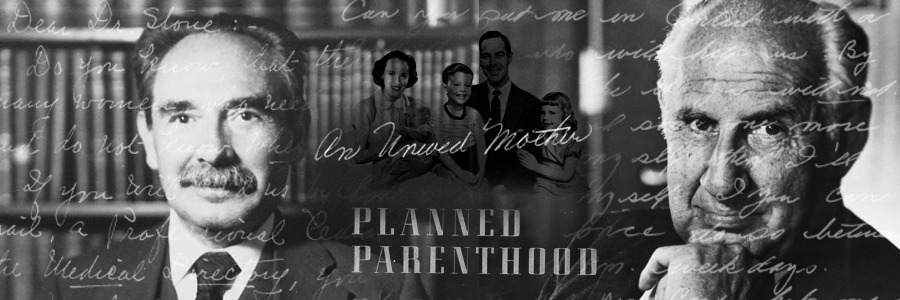
Abraham Stone and Alan Guttmacher were instrumental in the development and growth of the Planned Parenthood Federation of America from the 1950s through the early 1970s. Both were responsible for shifting the focus of the organization to include fertility services, marriage counseling, and the prevention of global overpopulation by collaboration with international colleagues while continuing to provide birth control and family planning education in the United States. Stone’s collaboration with Margaret Sanger, particularly on global overpopulation prevention during the 1950s, was continued by Guttmacher in the 1960s and 1970s in his travels promoting family planning and his efforts to foster a tighter bond between the Planned Parenthood Federation of America and the International Planned Parenthood Federation.
This exhibition chronicles the work of Abraham Stone and Alan Guttmacher in their roles as Director of the Margaret Sanger Research Bureau and as the President of Planned Parenthood-World Population, the Planned Parenthood Federation of America, respectively.
Scalpel and the Pen

Physician, lecturer, novelist, inventor, historian, anatomist, humorist—and poet, professor, and autocrat of the breakfast-table—Oliver Wendell Holmes (1809-1894) has been called “the most successful combination which the world has ever seen of the physician and man of letters.” This exhibit, The Scalpel and the Pen, takes its name from that idea and explores all the different sides of the personal and professional career, in both literature and medicine, of this true Boston original.
Strange Magic of the Enchanted Goblet
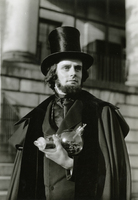
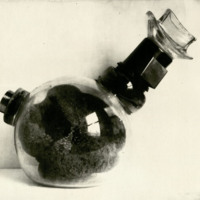
In 1846, at Massachusetts General Hospital, the first public demonstration of a surgical operation employing ether anesthesia changed medicine, surgery, and patient care in a sudden and fundamental way. Strange Magic of the Enchanted Goblet draws on the rich holdings of both the Boston Medical Library and Harvard Medical School to examine this critical event in medical history—with its rival claimants and controversies—and outline the tangled story of the introduction of surgical anesthesia.
Talking Heads
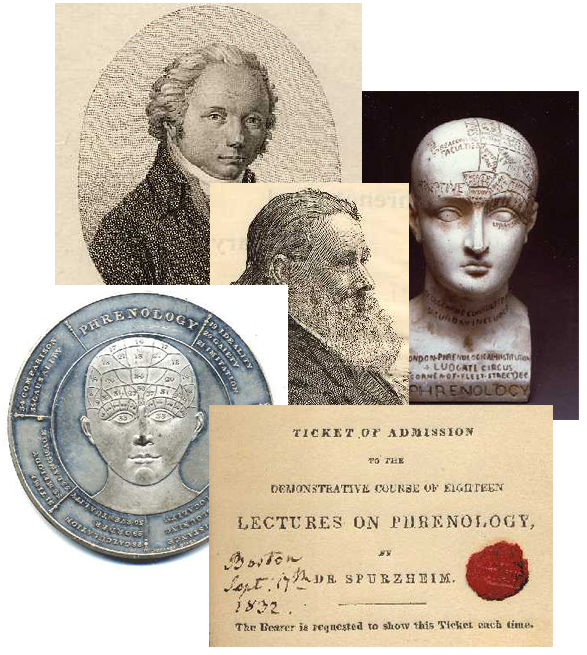
Why do we act the way we do? What determines the patterns of our behavior and personality? These are questions to which every generation seeks answers. Today, psychology and, increasingly, genetics are being explored to understand and explain the vicissitudes of human nature, but these are only just the latest in a long string of explanations. During the 19th century, phrenology—the study of human cranial structures and their application to personality, character, and behavior—provided another, and a popular, explanation.
At its peak, phrenology excited intense interest among both scientists and the public in Boston and throughout the world. Although its heyday has long passed, the movement endured into the 20th century, and some of its vestiges can still be found today. Talking Heads explores the basis for phrenological study, some of the major figures associated with it, and Boston's own unique place in the history of this peculiar and popular movement.
The Stethoscope Sorority: Stories from the Archives for Women in Medicine
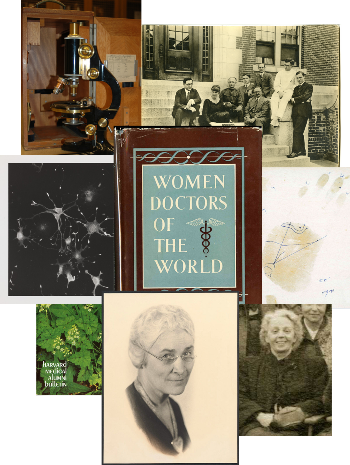
Over the years, women have faced, and continue to face, many struggles in the field of medicine. Despite this ongoing adversity, they have emerged as strong leaders and helped revolutionize the profession. The Archives for Women in Medicine (AWM) at the Countway Library was created in 2000 to capture and preserve the untold history of the many women who have helped change the face of medicine in the United States. This exhibition highlights materials from the AWM that illustrate women’s experiences as mentors, pioneering researchers, healers, and strong voices speaking out for their beliefs. Using their own words, the exhibition presents stories from some of the women of the AWM and the people who have helped contribute to their successes.
As you go through the exhibition, listen to their stories. Consider how the field of medicine has advanced as a result of these women. How have these changes affected your life as a physician, scientist, patient, or future medical professional? What does the future hold for women in medicine?
The documents and images in this exhibit are from various collections of the Archives for Women in Medicine.
To Slay the Devouring Monster
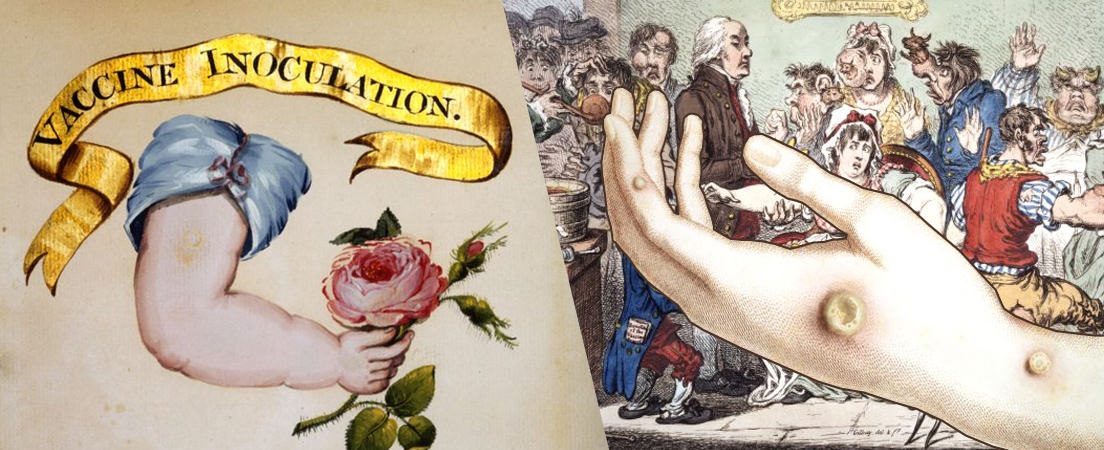
Smallpox—it is an ancient, terrifying, and deadly disease which has afflicted humanity for at least 2000 years. But today, smallpox is the only naturally occurring disease which is considered to be eradicated.
The long road to the eradication of smallpox in the United States begins two hundred years ago, in Cambridge, Massachusetts, where Benjamin Waterhouse studied the researches of English physician Edward Jenner and followed with his own experiments. Dr. Waterhouse then fostered an aggressive campaign to inoculate Americans against smallpox—the disease he called the "devouring monster." In the bicentennial year of Benjamin Waterhouse's vaccination experiments, the Countway Library of Medicine drew on its extraordinary collection of rare books, pamphlets, broadsides, manuscripts, letters, and artifacts—many gifts from members of the Waterhouse family—to commemorate the first efforts to slay that devouring monster.
Women in Medicine Legacy Foundation: Oral Histories

Foundation for the History of Women in Medicine Oral Histories Exhibit. Video includes sound.
The Archives for Women in Medicine, Center for the History of Medicine, Harvard Medical School, and the Women in Medicine Legacy Foundation or WIMLF (formerly the Foundation for the History of Women in Medicine) partnered in 2007 to promote research and recognition of the women who made an impact on the world of medicine. To that end, AWM proudly presents two oral history projects conducted by WIMLF: the Renaissance Women in Medicine Oral History Project and Voices of the Foundation. Containing over 30 hours of audio, complete transcripts, and additional materials including photographs, ephemera, and portraits by WIMLF President Wilma Bulkin Siegel, this exhibit shares the stories of incredible women honored for their contributions to medicine and to the lives of those around them.
Women in Medicine Oral Histories (Harvard medical School. Joint Committee on the Status of Women)
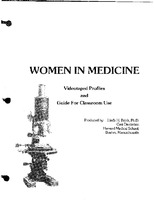
The Joint Committee on the Status of Women is a standing committee of the Faculty of Medicine at Harvard University. The purpose of the committee is to facilitate the development and contribution of women affiliated with Harvard Medical School and Harvard School of Dental Medicine. In addition to the videos, the collection contains transcripts, faculty profiles, and classroom discussion guides scanned from the original guide book. Includes footage of the work environment, scientists, Ph.D. students, research laboratories, hospitals, and the medical school.
In 1984, the video series "Women in Medicine" was designed for use in social studies and science classes and in career counseling centers. Nine videotaped profiles introduce students to distinguished women in academic medicine. There are study questions for each tape as well as discussion questions which build upon the entire series or a combination of tapes. The Guide also includes a glossary of key terms and a bibliography to aid further research.

